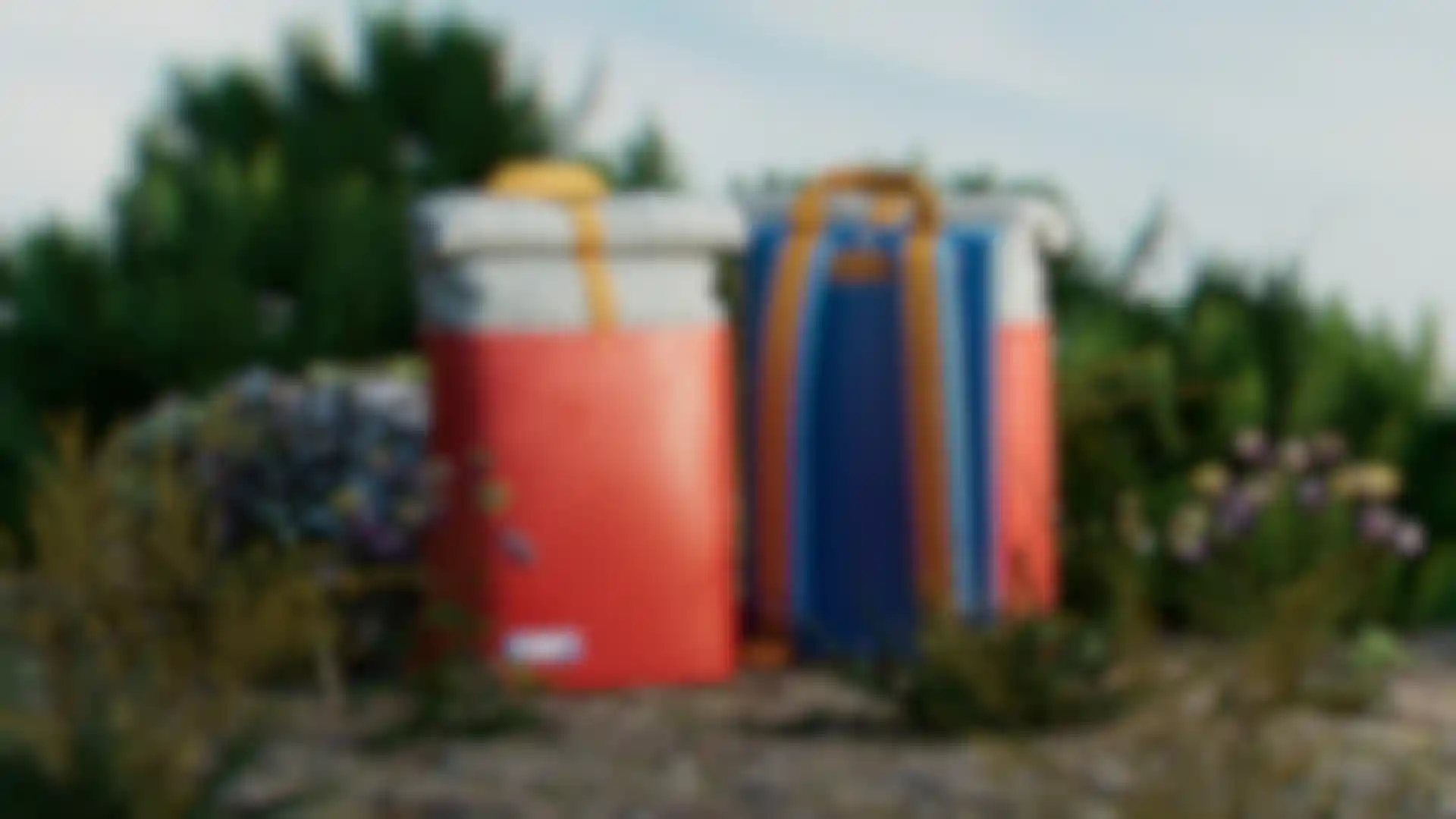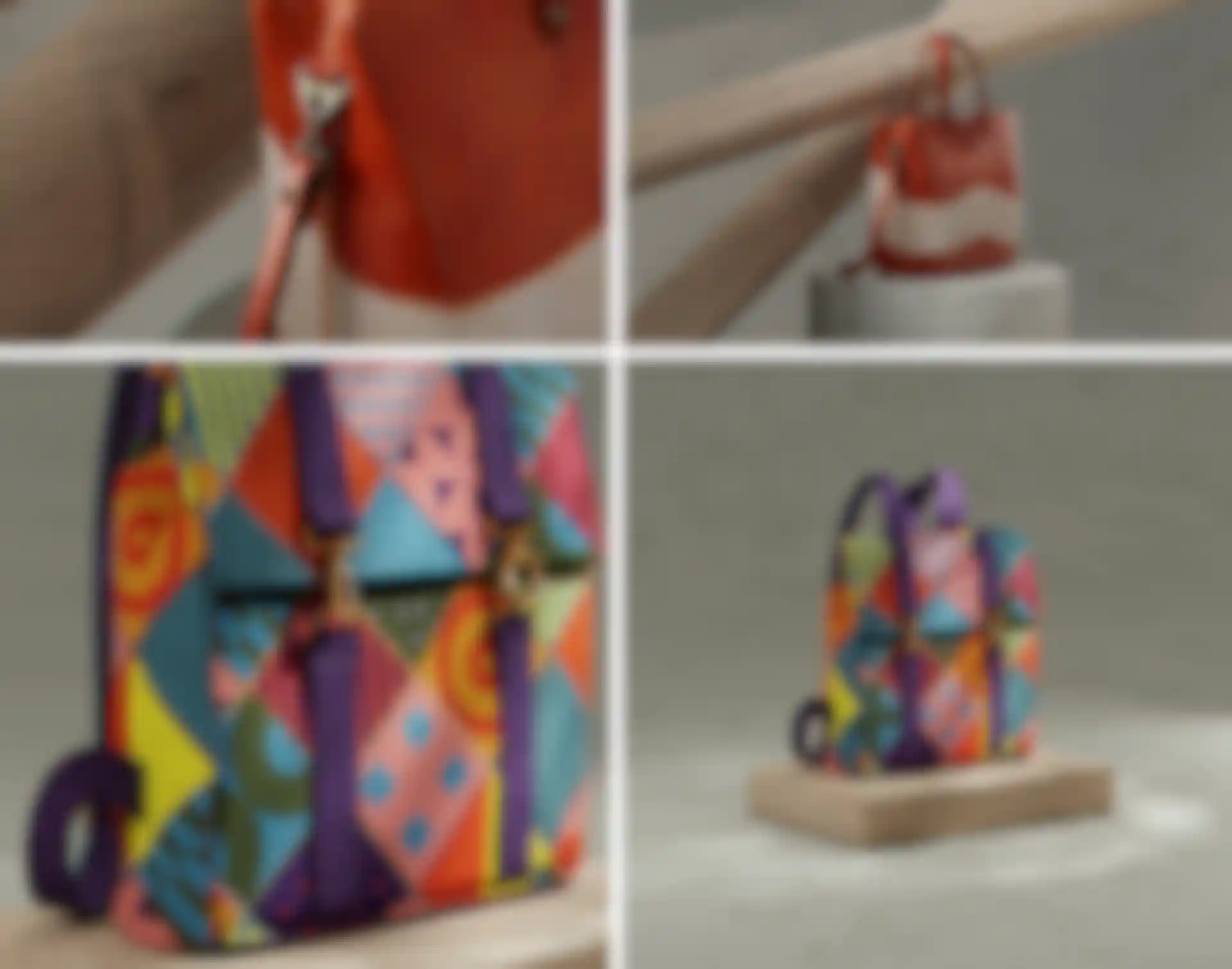
Weird and Wonderful 3D Design Adobe’s Anna Natter explains how she uses Cinema 4D, Adobe Substance 3D, and Adobe After Effects to create extraordinary 3D designs.
Adobe Substance 3D Design Evangelist Anna Natter always thought she would be an art teacher but once she discovered how much she loved creating on a computer, she changed her plans entirely and dove into a career in 3D design.
Known for her self-described “weird,” wonderful, and highly detailed work, Natter enjoys using tools and techniques in ways others don’t so she can bring her own “voice” to every project.
We talked with Natter, who presented for Maxon at IBC last fall, about how she uses Cinema 4D, Adobe Substance 3D, and Adobe After Effects to create distinctive 3D designs that stand out from the crowd.
How did you become a graphic designer/3D artist? Were you creative as a kid?

Natter: I come from an art-curious family and my parents took me to exhibitions from a very young age. My dad was a musician who ran his own musical instruments museum, and he created very unusual conceptual instruments. He actively organized exhibitions as well, so I could get a glimpse of Hungary’s art movements in the ‘80s.
As a child, I couldn’t stop drawing. My parents enrolled me in art school, and I also had amazing teachers in high school where I studied art and traditional animation techniques. I studied art and visual communication at university, and after graduation I moved to Budapest and worked for nearly a decade at the RTL television station on the news graphics team.
I was using Cinema 4D and After Effects for 2D and 3D graphics while I was there, and I realized I loved the fusion of technology and design and wanted to do that. Twenty years later, I’m still in love with this profession.
Tell us about some of the gorgeous fabric and apparel projects you’ve worked on.
Natter: New 3D Paths in Substance Painter can create nice, realistic stitching and the perfect subject for that is handbags. I’ve been creating a lot of embroidered fabrics and all sorts of custom fabric materials with Substance 3D Sampler. Those types of materials really make an apparel asset shine, and there is a huge variety of 3D models in Substance 3D assets that work great with Cinema 4D.

After texturing the models in Painter, I import them into C4D, and I create a Redshift material for each texture set. It’s easy to connect the texture layers to the right nodes, and now it’s even easier to work with Substance materials in C4D whenever you download a material from Substance 3D Assets, you can literally drag and drop it and start working. And I always render my C4D projects in Redshift.
I really enjoy creating weird surfaces and playing with different textures that create a unique look. In 3D people often use the same textures, models, lighting tools, and rendering engines so if you want to stand out, you have to find your own voice.
Describe how C4D, Substance 3D, and After Effects are helpful to you as an artist?
Natter: I love the consistency I get using Substance materials and Cinema 4D with After Effects because I can easily blend 2D and 3D layers in the same composition. That opens up a lot of possibilities and gives me more control because I can decide where it makes the most sense to work with 3D assets natively versus renders.

It's the best of all worlds being able to bring together renders, models, and 2D layers in 3D space without having to constantly re-render 3D content. And I like that you still have full advantage of 2D layer effects and post-processing on native 3D models textured and animated in Substance and Cinema 4D.
In addition to being an Adobe Substance 3D Design Evangelist, you also freelance, right?
Natter: Yes, I launched my own freelance business in 2016 after taking a break when my twin girls were born. Over the years, I collaborated with Adobe on many different projects and after a while my attention shifted back to 3D when I discovered Adobe Dimension. I made a lot of tutorials to share my experience and felt like it was my calling to help people transition from 2D to 3D because I knew from my own experience that it is not an easy thing to do.
In 2021 I became a Community Manager for Substance and a year later I joined the Substance 3D Evangelist Team. It’s been an incredible experience working with the most dedicated and extremely talented people I’ve ever met in my design career. The best part of my job is that I’m able to follow my calling and use my platforms to share the latest developments with the designer community. I like being able to use Adobe’s tools to create projects that inspire people.
Any thoughts to share with artists on how the combo of C4D, Substance 3D, and/or After Effects could streamline their workflows?
Natter: Substance is my go-to for material creation and texturing modes. With the Substance Collection I can build textures from scratch or from pre-made materials, and texturing in Painter is fast and intuitive. Now that you can use Substance materials directly in Cinema 4D, it’s easy to apply highly customized materials adapted to my project’s needs while also being able to move sliders to adjust parameters at any time.

Native connectivity between Substance and C4D helps me stay flexible and work more quickly. Most importantly, I don’t have to be overly concerned about technical hurdles when making and integrating textures, so I can stay focused on being creative. No other solution offers that.